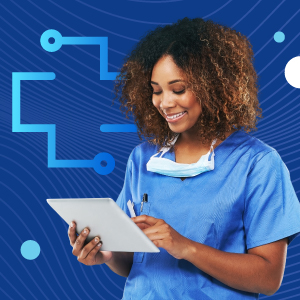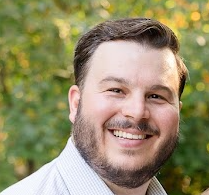At this year’s Medicaid Enterprise Systems Conference (MESC), held August 11-14 in Milwaukee, Wisconsin, Federal officials, technology partners and thought leaders joined to share insights on modernization, artificial intelligence (AI), fraud prevention and cloud adoption.
Carahsoft attended MESC alongside its partners to facilitate connections between healthcare systems and technology vendors.
Here are the top five insights from MESC.
1. Unified Observability Enables Modernization
As agencies modernize, observability is becoming critical to success. In the session “You Can’t Modernize What You Can’t See: Observability for Medicaid Cloud Future,” Datadog speakers Greg Reeder, the Senior Director of the Public Sector Marketing, Ryan Gault, the Regional Sales Director for SLED East, and Abe Rosloff, the Enterprise Solution Engineer for SLED, discussed best practices for the cloud. Observability reduces the time it takes teams to find system bottlenecks. With Datadog’s unified observability SaaS platform, agencies can utilize real-time monitoring to oversee critical systems. The Centers for Medicare & Medicaid Services (CMS) has released new modules that run alongside 30 year old modular systems. Onboarding the cloud to legacy systems can be tricky, so Datadog’s unified platform provides a layer of visibility that empowers users with insight in the form of an easy-to-use dashboard. Working with a large Medicaid agency on both coasts under contracts with the National Association of State Procurement Officials (NASPO), the US General Services Administration (GSA) and OMNIA, Datadog helps pinpoint issues quickly through their SaaS platform.
With Datadog’s unified monitoring, agencies gain real-time visibility into user interactions to proactively identify and address breaches before they arise.
2. AI Use Cases for Medicaid

In the session “Avoiding AI Landmines in Medicaid: What Worked, What Didn’t and What We’ve Learned,” speakers Eng Tan and Cynthia Afkhami from Automated Health Systems (AHS) discussed the pros and cons of various AI usages. AHS discussed its digital journey in AI adoption; it took three months for users to learn terminology, three months to build the model and six to nine months to test it. While building the AI was easy, the production stage was more challenging. Instead of traditional IT testing, AI requires strategic, human-centered testing. In one case study, AHS designed Infobot, a “digital butler” for customer support representatives that helped translate notes between Spanish and English. This resulted in reduced wait times, a 3% increase in scores and reduced attrition. AHS attributes this success to relevant management buy-ins, IT management support, staff participation, senior management support and focused training. Ultimately, AHS recommends having a solid foundation of data management, governance frameworks and team training before implementing AI.
Learn how AI can help streamline processes to build stronger, more resilient healthcare systems with Carahsoft’s AI solutions.
3. How GenAI Can Embolden Healthcare
In the session “Unleashing the Power of Generative AI on Care Planning in Healthcare,” speakers Mason Tanaka, the Deputy Commissioner and CIO from Alabama Medicaid Agency, and Andy Pitman, the State and Local Government Health and Human Services (HHS) Strategy Director for Microsoft, showcased Alabama Medicaid’s goals and guiding principles behind its new generative AI (genAI) platform, AI Continuum. In collaboration with Microsoft, Alabama Medicaid aims to bring genAI into healthcare planning by operationalizing various tools in testing and production to help teams reclaim ownership of the planning and design process. Through AI Continuum, nurses and social workers were able to support clinical decisions and use risk stratification predictive analytics to secure better patient outcomes.
Leverage genAI insights and maximize your data’s potential through Databricks’s optimized data infrastructure and scalable, predictive machine learning models.
4. Modernization, the Cloud and AI
In the session “CMS-5: MES State of States,” speakers from CMS Ed Dolly, the Deputy Director for Data Systems Group, and Eugene Gabriyelov, the Director Division of State Systems, reviewed the progress made in Medicaid Enterprise Systems (MES) and future goals.
The top takeaways include:
- The time spent creating modular certifications has been reduced from two years to fourteen months
- With over 1,300 MES submissions received annually, timely operational reporting has become more significant
- Metric reporting is essential for continued funding
Looking ahead to the upcoming fiscal year, goals include receiving operational metric reports from each state, standardizing interfaces, expanding AI usage and increasing collaboration across the nation.
Modernize with confidence to improve efficiency, transparency and accountability. Visit Broadcom’s page to learn how their solutions support interoperability.
5. Fighting Fraud with DNA Prevention
In the session “Fighting fraud: Insights from Illinois Health and Family Services (HFS) Office of Inspector General (OIG)’s internally developed Fraud, Waste and Misuse (FWM) early warning system,” speakers Wei-Shin Wang, the Bureau Chief at the Bureau of Fraud Science and Technology, Douglas Steinley, data analytics consultant at the University of Missouri, Ben Xu, the Sr. Developer at the Bureau of Fraud Science and Technology, and Jon DeShazo, the Senior Lead Consultant at Leads, discussed Dynamic Network Analysis (DNA)-powered fraud prevention. The FWM early warning system, which was built with NTT DATA and powered by DNA, saw successes in uncovering fraud patterns early on. Within the system, there are modules for profiles, reports and inquiries, advanced surveillance and risk detection, audit support and system usability. Early results from this training illustrate that automation and analytics can strengthen program integrity while reducing manual oversight.
Leverage trusted data analytics and streamlined operations with Equifax’s trusted solutions in data analytics and fraud-resilient technology.
——————–
As medical systems evolve, the common theme is clear: innovation must balance modernization with accountability, human-centered design and measurable outcomes.
Carahsoft’s healthcare portfolio equips agencies with cloud, genAI and analytics solutions that streamline operations and strengthen program integrity. By improving efficiency, reducing fraud and eradicating unnecessary costs, agencies can reinvest in sustainable healthcare that prioritizes improving patient outcomes.
Looking to modernize with the latest in healthcare technology? Visit Carahsoft’s broad range of contract vehicles to access Government healthcare solutions quickly and confidently.








